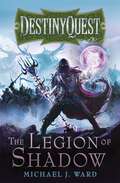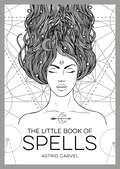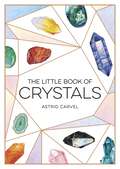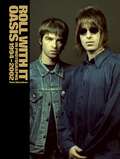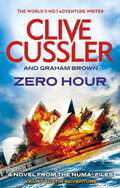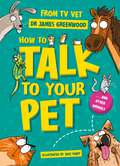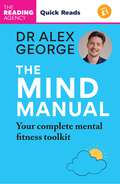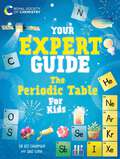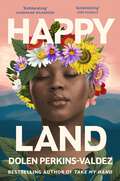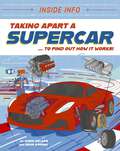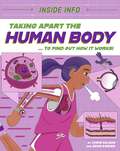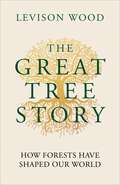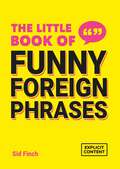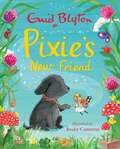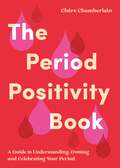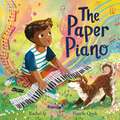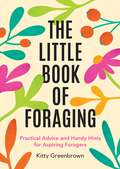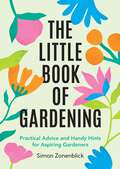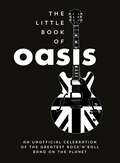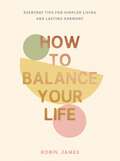- Table View
- List View
The Legion of Shadow: DestinyQuest Book 1 (DESTINYQUEST)
by Michael J. WardYou have no memory of your past.With only a sword and a backpack to your name, you must discover your destiny in an unfamiliar world full of monsters and magic.As you guide your hero through this epic adventure, you will be choosing the danger that they face, the monsters that they fight and the treasures that they find. Every decision that you make will have an impact on the story - and, ultimately, the fate of your hero.With hundreds of special items to discover in each book, you can completely customise your hero. You can choose their weapons, their armour, their special abilities - even the boots on their feet and the cloak on their back! No two heroes will ever be alike, which means your hero will always be unique to you.Welcome to a new world. Welcome to Valeron. Welcome to DestinyQuest.PLEASE NOTE THAT ALTHOUGH THE EBOOK VERSION IS FULLY HYPERLINKED, YOU WILL STILL NEED DICE, PAPER AND A PENCIL TO PLAY!
The Little Book of Spells: An Introduction to White Witchcraft
by Astrid CarvelTake control of your destiny and harness the positive natural energies of the universe with this spellbinding beginner's guide to white witchcraft.Magical energies permeate everything in nature, including ourselves. White witchcraft offers the chance to connect with our inner power and invoke these natural energies for magical purposes. It is also a platform for healing and reflection, self-care and self-discovery.Learn how the days of the week, weather patterns and the moon's phases can influence and enhance your magic abilities. Find out how to tap into the rhythms and infinite power of the natural world by uncovering the unique properties of natural ingredients - from herbs, flowers and seeds to incense and crystals - and how to use them to create spells for every day and any occasion. Discover how today's witch combines modern technology and traditional methods to help manifest their dreams.Enrich your life with the power of magic and learn how to:- Perform rituals for attracting prosperity.- Craft unique charm bags for courage and luck.- Use incantations for lasting happiness.- Combine modern tech with candle magic to find love.- Harness the new moon tide to manifest your goals.Go and make magic!
The Little Book of Crystals: A Beginner's Guide to Crystal Healing
by Astrid CarvelThere is a crystal for every occasionCrystals have a mystical, eternal quality and have long been treasured for their beauty. For thousands of years, they have been prized for their physical and spiritual healing properties. In almost every culture and civilization around the world, crystals of all shapes, colours and sizes have been used in religious rituals, as ornamentation or as talismans of good fortune. Small wonder then that today many of us seem so drawn to these precious and mysterious stones; our fascination with crystals is part of a vast and extensive legacy.All natural crystals vibrate with energy, and when these vibrations are used for healing, they have the effect of balancing the energies in the body, allowing for physical, mental or emotional healing. The right crystal can help to bring balance, calm and positivity into your life.This guide introduces over 40 essential crystals and their unique properties, from the love- and harmony-infused rose quartz to memory-boosting amber. Discover:how crystals workhow to select and maintain your crystalshow to make use of their power in everyday lifebasic techniques for crystal meditationhow to balance your chakras using crystalsa guide to birthstones… and other simple ways to bring harmony to mind, body and spirit using these natural treasures.
Death by Numbers: A hilarious and gripping cosy murder mystery (Una McMurray Mysteries Book 1) (Una McMurray)
by Jo Cunningham'Loved this book! A fun and quirky mystery. I just couldn't put it down, the characters in this book are just amazing as well so quirky and unique... a very good mystery as well.' - NetGalley reviewer, ⭐⭐⭐⭐⭐----------Something doesn't add up at the seaside...Una has always been more comfortable working with numbers than people. As an actuary for an insurance company, her job is to spot patterns that other people might miss.When the data for her latest project - into the predicted number of deaths in seaside resorts - shows a blip in her forecasts, Una's untarnished reputation at work is at risk. That is, unless she can work out why there's been an unusual spate of accidental deaths by the coast. Death by hanging basket? She's not seen that before.Where better to begin than her mother's hometown of Eastbourne, where strange fatalities are befalling her mother's bingo crowd.But as Una puts her spreadsheets aside and begins to investigate, a sinister pattern begins to emerge and she realises that there is nothing accidental about these casualties . . .Can Una stop the killer in this small seaside town, before she becomes a not-so-vital statistic?----------A witty murder mystery perfect for fans of Richard Osman, Ian Moore and the Reverend Richard Coles, readers and reviewers love Death by Numbers!'Clever and very funny' - Ian Moore, author of Death and Croissants'Eleanor Oliphant meets The Thursday Murder Club' - Jessica Irena Smith'Witty and fun' - Woman's Own'A terrifically funny, endearing read' - Belfast Telegraph'A impressive debut full of unusual ideas and amusing relationships' - Morning Star
Midnight and Blue: The Instant Number One Sunday Times Bestseller (A Rebus Novel)
by Ian RankinThe brand new John Rebus thriller from the iconic Number One bestseller Ian Rankin: one of the must-read books of the year. 'Rebus in jail and better than ever ... Surprising, gripping and witty. Rankin has taken the police procedural and transformed into an epic character study of a man and his city ... Nobody does it better.' THE TIMES* * * * * JOHN REBUS SPENT HIS LIFE AS A DETECTIVE PUTTING EDINBURGH'S MOST DEADLY CRIMINALS BEHIND BARS.NOW, HE'S JOINED THEM.As new allies and old enemies circle, and the days and nights bleed into each other, even the legendary detective struggles to keep his head.That is, until a murder at midnight in a locked cell presents a new mystery. They say old habits die hard...However, this is a case where the prisoners and the guards are all suspects, and everyone has something to hide. With no badge, no authority and no safety net, Rebus walks a tightrope - with his life on the line.But how do you find a killer in a place full of them?* * * * *PRAISE FOR MIDNIGHT AND BLUE:'Unforgettable ... Proves that Rebus is one of the most remarkable characters in crime fiction.'DAILY MAIL'With every novel, Rankin leaves us wanting more. Midnight and Blue is no exception. As Rebus ages, he becomes ever more human, ever more relatable, and the books become even better... This is unmissable.'MICK HERRON, the Sunday Times Number One Bestseller'Midnight & Blue is a triumph. Rebus as you've never seen him before and Rankin at his best.'ELLY GRIFFITHS, the Sunday Times Number One Bestseller'I was absolutely knocked sideways by it - it is utterly marvellous and so touching.' JILLY COOPER, the Sunday Times Bestseller'A taut, claustrophobic thriller, that puts a Golden Age twist on a modern-day tale. The perfect book to keep Rebus fans clanging their tin cups against the prison bars, until the riot kicks off...'STUART MACBRIDE, the Sunday Times Number One Bestseller'Kept me up reading until long after midnight. Blew me away. Absolutely brilliant, as always.'JILL MANSELL, the Sunday Times Bestseller'Loved this tense, pacy thriller, jam-packed with action but also a surprising vulnerability.'B. A. PARIS, the Sunday Times Bestseller**** PRAISE FOR THE ICONIC NUMBER ONE BESTSELLER IAN RANKIN: 'Ian Rankin is a genius' LEE CHILD 'Rebus is one of British crime writing's greatest characters: alongside Holmes, Poirot and Morse' DAILY MAIL 'Whatever he writes, it will be worth reading ... Rankin has redefined the genre' GUARDIAN 'The arrival of a Rankin novel remains one of life's pleasures' EXPRESS 'Rankin is a phenomenon' SPECTATOR 'Worthy of Agatha Christie at her best' SCOTSMAN 'The king of crime fiction' SUNDAY EXPRESS 'Great fiction, full stop' THE TIMES**** Ian Rankin's A HEART FULL OF HEADSTONES was a Sunday Times bestseller w/c 10th October 2022 and w/c 1st May 2023
Roll With It: Oasis in Photographs 1994–2002
by Tom Sheehan'Sheehan captures the rise and fall of Oasis over a wild decade'-THE TIMES'Enough to make you mad fer it all over again'-ROLLING STONERELIVE ROCK 'N' ROLL HISTORY THROUGH THE LENS OF LEGENDARY PHOTOGRAPHER TOM SHEEHANMore than 200 images of Oasis, with many seen here for the very first time, in a stunning cloth-bound hardback.Renowned photographer Tom Sheehan (Melody Maker, NME, Uncut) worked with Oasis throughout their career. Starting with a wild trip to New York before the release of the band's debut album, this stunning book also documents seminal (What's the Story) Morning Glory? recording sessions as well as blistering live performances, intimate off-duty moments and portraits that graced iconic magazine covers down the years.Featuring Tom's memories from his time with Oasis and a new biography by acclaimed writer Sylvia Patterson - drawing on personal interviews with Liam and Noel Gallagher - Roll With It is a breathtaking celebration of a band that will live forever.
Zero Hour (The NUMA Files #11)
by Clive Cussler Graham BrownClive Cussler, author of the bestselling Dirk Pitt series, and his co-author, Graham Brown, send hero Kurt Austin into the heart of the storm in the action-packed NUMA Files series.A new energy source holds the promise to change the world. If it doesn't kill it first.It's called zero point energy - a state of energy contained in all matter everywhere, and all but unlimited. Nobody has ever found a way to tap into it, however . . . until one scientist does.The problem is, his machines also cause great earthquakes, even fissures in tectonic plates. One machine is buried deep underground; the other submerged in a vast ocean trench. If Kurt Austin, Joe Zavala and the rest of the NUMA team aren't able to find and destroy them - and soon - the world will be on the threshold of a new era of catastrophe and unchecked volcanism.Praise for Clive Cussler'Cussler is hard to beat'Daily Mail'Clive Cussler is the guy I read'Tom Clancy'The Adventure King'Daily Express
Odessa Sea (Dirk Pitt Adventures #24)
by Clive Cussler Dirk CusslerDirk Pitt is caught up in a dangerous and thrilling mystery on the murky waters of the Black Sea . . .As Director of the National Underwater and Marine Agency, Dirk Pitt has always had a knack for finding trouble. This time, though, trouble has found him . . .On a NUMA mission to the Black Sea to locate the wreck of a lost Ottoman Empire ship, Pitt and his friend Al Giordino respond to an urgent Mayday from a nearby freighter. By the time they reach the ship there's no one left alive - just dead bodies and the smell of sulphur in the air. When a massive blast from the stern suddenly scuttles the ship, Pitt and Giordino are lucky not to be added to the death toll.As they investigate the fate of the lost ship, they're plunged deep into an extraordinary mystery. And when connections emerge between a desperate attempt in 1917 to preserve the wealth and power of the Romanov empire, a Cold War bomber lost with a deadly cargo, modern-day nuclear smugglers and a brilliant engineer developing cutting-edge drone technology, Pitt is faced with the most dangerous challenge of his career. One that will threaten the lives of his family and friends.Packed with breathtaking suspense, switchback plotting and remarkable imagination, Odessa Sea proves once again that, when it comes to adventure, Clive Cussler is in a league of his own.Praise for Clive Cussler'Cussler is hard to beat' Daily Mail'Oceanography's answer to Indiana Jones. Exotic locations, ruthless villains, and many narrow escapes - Cussler's fans come for swashbuckling and he delivers' Associated Press'Nobody does it better. . . nobody!' Stephen Coonts'Just about the best storyteller in the business' New York Post'The adventure king' Daily Express
How to Talk to Your Pet: And Other Animals
by Dr James Greenwood'Essential reading for any pet owner or animal lover' - Dr Xand van Tulleken'Finally... we can understand what our pets actually think!' - Dr Ranj Singh**Discover how to talk to your pet, with vet and star of Channel 4's Fur Babies and CBBC's The Pets Factor, Dr James Greenwood.What does it mean when a dog's tail wags round and round like a helicopter?What is a cat is trying to say when its ears are pricked up?And what on earth is a rabbit trying to tell you when it eats its own poo?From cats and dogs to horses, hamsters, rabbits and more, animals all have something to say. Learn how to read the clues your pet is trying to give you, find out what they need, and discover how to communicate with them, too!Buzzing with brilliant facts and packed with hilarious illustrations, this pet companion book is the perfect gift for young animal-lovers.
The Mind Manual: Mental Fitness Tools for Everyone (Dr Alex George)
by Dr Alex GeorgeTHE SUNDAY TIMES BESTSELLER (December 2023)Mental health matters! Learn how to assess your mental health today - and understand what's normal for you. Discover the seven universal truths that everyone should remember, and the mental fitness foundations that will boost you. And exercise your mind with the mental health toolkit that will help you thrive.
Volcanoes and Earthquakes (Professor Hoot's Science Comics #4)
by Jen GreenEvery day brings a new adventure for Professor Hoot - and a new learning experience. There's a plume of smoke in the distance, it looks like a volcano has erupted! Professor Hoot sets off to investigate all about volcanoes and how they are formed, all while avoiding smoky feathers! Discover other natural distasters, such as earthquakes, tsunamis and landslides - and what to do in such events.An entertaining comic strip approach to KS1 science topics, Professor Hoot's Science Comics are accessible and full of fun. Each book is an adventure and a chance for readers to learn something new, before testing their knowledge at the end of each book in Professor Hoot's quiz. Collect each adventure: Big Machines; Dangerous Animals; Dinosaurs; Robots and AI; Space; Volcanoes and Earthquakes.
The Periodic Table for Young Scientists (Your Expert Guide #1)
by Dr Dr Kit ChapmanFrom a top expert in the world of science comes this definitive guide to the Periodic Table, published in partnership with the Royal Society of Chemistry.In Your Expert Guide: The Periodic Table, discover the origins and genius of the Periodic Table: how the idea came about, what each symbol means and how it underpins our understanding of matter, materials and the study of chemistry. Explore the elements at work in our world and get a clear picture of the Periodic Table's role in explaining the building blocks of the Universe.Written by Dr Kit Chapman, award-winning science journalist, academic at Falmouth University and global science communicator. Published in partnership with The Royal Society of Chemistry, the internationally renowned nonprofit organisation with the same mission since 1841: to advance excellence in the chemical sciences. With lovely artwork by Dao Linh, see the elements come alive for curious readers aged 8+.Books in the Your Expert Guide series:With the Royal Society of Chemistry: The Periodic Table and Chemistry for Young ScientistsWith the Royal Society of Biology: The Human Body and Biology for Young ScientistsWith the Institute of Physics: The Universe for Kids and Physics for Young Scientists
Happy Land
by Dolen Perkins-Valdez'It's time we name our kingdom!' he shouted over the wind. 'I say we call this place Happy Land. If this ain't the land of happy people, then where is it? Why not create our heaven right here on earth?'Nikki Berry hasn't seen her grandmother Rita in years. When she calls out of the blue asking Nikki to visit her urgently in the hills of North Carolina, Nikki hesitates only for a moment. Her mother and grandmother have long been estranged, and after years of silence in her family, Nikki is determined to learn the truth while she still can.But instead of answers about the recent past, Mother Rita tells Nikki the incredible story of a kingdom on this very mountain, and of her great-great-great grandmother, Luella, who became its queen.It sounds like the makings of a fairy tale - royalty among a community of freed people. But the more Nikki learns about the Kingdom of the Happy Land and the lives of those who dwelled in the ruins she discovers in the woods, the more she realizes how much of her identity and her family's secrets are contained in these hills. Because this land is their legacy, and it will be up to her to protect it before - like so much else - it is stolen away.Inspired by true events, Happy Land is a transporting multi-generational novel about the stories that shape us and the dazzling courage it takes to dream.
Dangerous Animals (Professor Hoot's Science Comics #3)
by Greta BirchEvery day brings a new adventure for Professor Hoot - and a new learning experience. At sunrise, Professor Hoot sets off to find out all about the most dangerous animals on the planet, and narrowly avoids becoming someone's lunch! From venomous snakes to toothy sharks and fearsome lionesses, discover the deadly bites, killer claws and surprising skills animals use to attack their prey - and warn others away.An entertaining comic strip approach to KS1 science topics, Professor Hoot's Science Comics are accessible and full of fun. Each book is an adventure and a chance for readers to learn something new, before testing their knowledge at the end of each book in Professor Hoot's quiz. Collect each adventure: Big Machines; Dangerous Animals; Dinosaurs; Robots and AI; Space; Volcanoes and Earthquakes.
Taking Apart a Supercar: ... to find out how it works! (Inside Info #2)
by Chris OxladePeel back, take apart, reassemble and enjoy the awesome science of supercars!Inside Info: Taking Apart a Supercar is full of turbo-charged, sleek and surprising features of supercars of all kinds. Working inwards from the outermost layer - the streamlined spoilers and five layers of protective paint - to the heart of its power - the engine - we get to know the parts and process of making a supercar super. Finally, see how it all goes back together through the genius of production, engineering and design. Inside Info is a stylish and engrossing series of books diving into the layers of things kids are curious about - giving them the chance to pull it all apart and put it back together again, while learning STEM fundamentals! Perfect for readers aged 7 and up.The series presents the Inside Info of: Supercars, A Rocket, A Rollercoaster, A T. rex, The Human Body and A Coral Reef
Taking Apart the Human Body: ... to find out how it works! (Inside Info #1)
by Chris OxladePeel back, take apart and get inside the awesome science of the human body, then put it back together again!Inside Info: Taking Apart the Human Body is full of the fast-pumping, electric and surprising features of our insides. Working inwards from the outermost body bits - our millions of hairs and many layers of protective skin - to the very centre of our bones, we get to know the parts and processes keeping our body running. Finally, see how our cells build up and bring together each part, and how doctors get up-close 'inside info' every day using amazing tech, such as, MRIs, X-rays and ultrasound.Inside Info is a stylish and engrossing series of books diving into the layers of things kids are curious about - giving them the chance to pull it all apart and put it back together again, while learning STEM fundamentals! Perfect for readers aged 7 and up.The series presents the Inside Info of: A Supercar, A Rocket, A Rollercoaster, A T. rex, The Human Body and A Coral Reef
The Great Tree Story: How Forests Have Shaped Our World
by Levison Wood'A thrilling journey of discovery' -- Tristan Gooley, author of How to Read a Tree'Levison Wood has done the impossible. To tell the story of trees in a single book is a Herculean task, but one that he has resoundingly achieved.' -- Merlin Hanbury-Tenison, author of Our Oaken Bones'A thrilling, moving, and convincing journey through the life of trees.' -- Will Storr, author of The Status Game'This powerful book brims with curiosity, original thought, and cutting-edge research, but amidst the wonder, you can also hear the haunting 'cry' of the natural world.' -- Sophy Roberts, The Lost Pianos of Siberia Levison Wood has spent a lifetime exploring wild places and witnessing environmental challenges and conservation efforts around the world. Now, he's delving into the incredible world of forests. In this global investigation, The Great Tree Story explores the profound influence forests have had on our planet and civilisation. Each chapter digs into a different aspect of this relationship, from the evolutionary history of trees and their cultural significance in ancient civilisations, to the impacts of agriculture, colonisation, and the industrial revolution on forest ecosystems. The book highlights the wisdom of indigenous communities in forest stewardship, examines the environmental movement's efforts to protect forests, and analyses the causes and consequences of deforestation and environmental degradation.Forests are integral components of the global ecosystem. They serve as complex habitats for flora and fauna, supporting a delicate web of interdependence that we have only scratched the surface of understanding. Every organism, from the towering trees to the smallest insects, plays a crucial role in maintaining the biodiversity that sustains our planet. The intricate relationships woven within forests are not to be underestimated, for they are the threads that hold our world together.In this compelling weaving of fascinating anecdotes and in-depth research, Wood contemplates the future of forests, emphasising the importance of collective action and individual responsibility in preserving these vital ecosystems.
The Little Book of Funny Foreign Phrases: A Collection of Creative, Hilarious and Ridiculous Sayings from Across the Globe
by Summersdale PublishersEver been stuck for a phrase that sums up exactly how you feel? These hilarious foreign expressions have got you covered in every scenario. With a variety of sayings from around the world, this entertaining compilation will equip you to insult your friends, proclaim your feelings and speak your mind in new and creative ways.
Pixie's New Friend
by Enid BlytonBobs the puppy LOVES adventuring in the hillside until, one day . . . he gets a painful thorn stuck in his paw!Luckily, a tiny pixie comes to his rescue, only to leave as quickly as she came. Life goes on and seasons change, but when Pixie needs help, will Bobs be there for her too? From one of the world's best-loved storytellers, comes this cosy and heartfelt tale about the big friendships that grow from the smallest acts of kindness.
The Period Positivity Book: A Guide to Understanding, Owning and Celebrating Your Period
by Claire ChamberlainEmbrace period positivity and get to know your cycle with this frank and empowering guide to menstrual health. This book is here to open up the conversation, break the taboo, and answer the questions you were too afraid to ask. Through tips and invaluable advice, you'll learn everything you need to know about how your period affects you.
The Paper Piano: An inspirational picture book for music lovers
by Rachel IpWhen Noah hears beautiful piano music sweeping through the station, he longs to play. Without a pianoof his own, he carefully crafts one out of paper, and the notes fill his head night and day. Until finally, with the help of a neighbour, his musical dream comes true . . .An inspirational picture book about the power of perseverance and music, celebrating the joy that railway station pianos can bring to all. Written by award-winning author Rachel Ip, with artwork from award-winning illustrator Natelle Quek.
The Little Book of Foraging: Practical Advice and Handy Hints for Aspiring Foragers
by Kitty GreenbrownWhether you're a beginner or wanting to brush up on your existing skills, and no matter where you live, this book will help you learn the essentials, identify staple foods and discover recipes to create foraged feasts.The Little Book of Foraging is the ideal companion and will show you how to gather food safely, responsibly and joyfully.
The Little Book of Gardening: Practical Advice and Handy Hints for Aspiring Gardeners
by Simon ZonenblickWhether you're a beginner or wanting to hone your existing skills, and no matter the size of your garden, this book will help you learn the essentials. discover a wide range of flora and plan a garden.The Little Book of Gardening is the ideal companion and will show you how to garden at your own pace, in your own time, in your own way.
The Little Book of Oasis: An Unofficial Celebration of the Greatest Rock 'n' Roll Band on the Planet
by Summersdale PublishersWhether it's Liam's swagger, Noel's carefully crafted songwriting or the collective Northern soul at the heart of their anthems - Oasis are simply unforgettable. With candid quotes, upfront facts and a shedload of tidy trivia, this book covers the supersonic highs and catastrophic lows of the maddest, baddest rock'n'roll band on the planet.
How to Balance Your Life: Everyday Tips for Simpler Living and Lasting Harmony
by Robin JamesFind harmony in all aspects of your life with this beautiful guide to simple, balanced living. With practical tips on everything from managing day-to-day stress to finding a work-life balance, How to Balance Your Life is your go-to guide to discovering lasting peace. So, take your first step towards a happier, healthier and more relaxed future.
